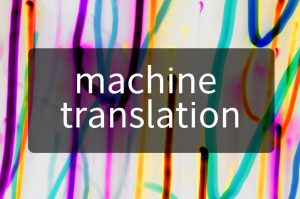Quite a while ago we took a look at the role of machine translation (MT) in life science translations. It’s a hot topic of debate, and we can all see with a quick internet-based translation what the pitfalls are. These one-off quick translations of a block of text often lack accuracy. Because of this, web-based translation often translates that text as individual words. Whether it be the subtleties and nuances of individual dialects or lack of context, it often misses the mark.
Modern Advancements in Machine Translation
Machine translation is gaining speed, whether we are ready for it or not. The advancements in the technology behind it is making companies increasingly invest in MT. With the time constraints and demands placed on the translation industry today, leveraging machine translation with terminology management systems is becoming a necessary step to deal with the sheer volume of content to be translated. Neural Machine Translation (NMT) the newest form of machine-based translation has disrupted the industry as we know it. Microsoft has a great resource for explaining the difference between the traditional use of statistical based machine translation and how the neural network is used to produce better results.
Increased Focus on Post-Editing
Due to the sensitive nature of life science translations, the need for human touch points cannot be erased. Although working in batches of translated text comes with unique challenges, MT is an invaluable tool to the translator. We can already see the immense value of terminology managements systems and glossaries for translators. Having the ability to leverage these in coordination with of machine translation, allows translators to handle an increased load while maintaining the necessary stringent requirements for quality.
Regardless of the advances in machine translation, post-editing is a vital step that requires hands on work. Likewise, linguistic validation, a key stage in the localization process within the industry, requires quality-focused subject matter expert translators. Although a shift towards more work in post-editing means a different approach for translators, the machine can’t quite completely take over the task yet.
Want to learn more about the direction and advancements in MT, check out the 16th Machine Translation Summit at Nagoya University, Japan, from September 18 through 22, 2017.
